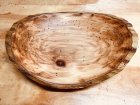I live in the Houston area and have some pecan, oak, and hackberry stored under an open-sided lean-to off of my steel building. My son wanted a decent sized pecan limb for a small turning project of his. I had trimmed a pecan branch off of a tree that was hanging over our fence more than a year ago, sealed both ends with Anchorseal, stuck it under my lean-to, and forgot about it. When he asked about some pecan, I gave him that piece. He took it home and got it ready to put it on his lathe and texted me that the pecan had holes throughout it, sawdust, bug shells, etc. His guess was termites. Several years ago someone gave me some pecan chunks off of a tree of theirs that I was going to use in my smoker. I left this undercover also but still open to bugs, wind driven rain, etc. and ended up with the same result.
Have folks noticed that the bugs seem to like pecan better than other wood (my oak and hackberry don't seem to be affected)? I don't really have enough room indoors to store trunks, branches, etc. and sometimes worry about bringing an infestation inside where I have good lumber.
I keep threatening to bring in a shipping container and have a spot behind my shop where I could put it...that would make a pretty nice storage place.
Have folks noticed that the bugs seem to like pecan better than other wood (my oak and hackberry don't seem to be affected)? I don't really have enough room indoors to store trunks, branches, etc. and sometimes worry about bringing an infestation inside where I have good lumber.
I keep threatening to bring in a shipping container and have a spot behind my shop where I could put it...that would make a pretty nice storage place.

